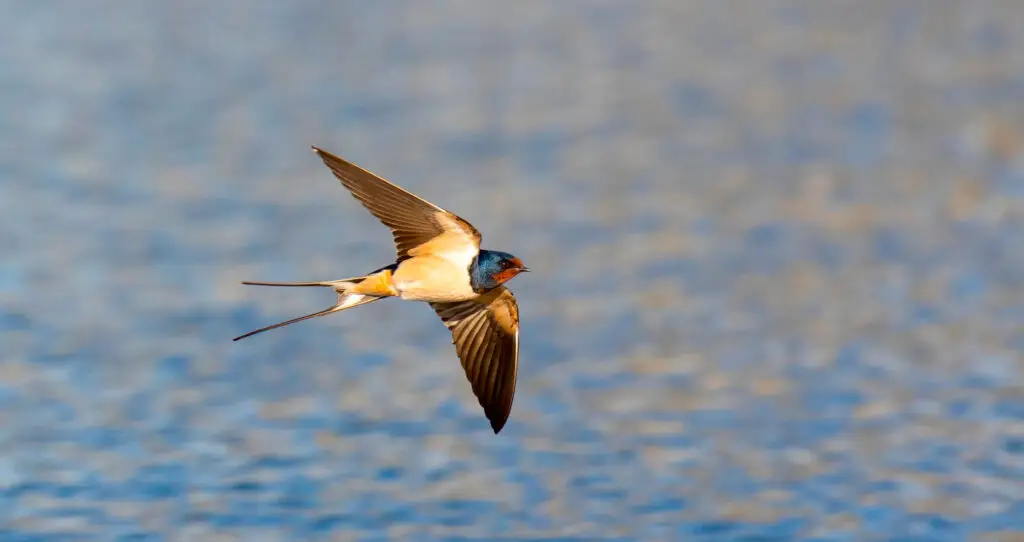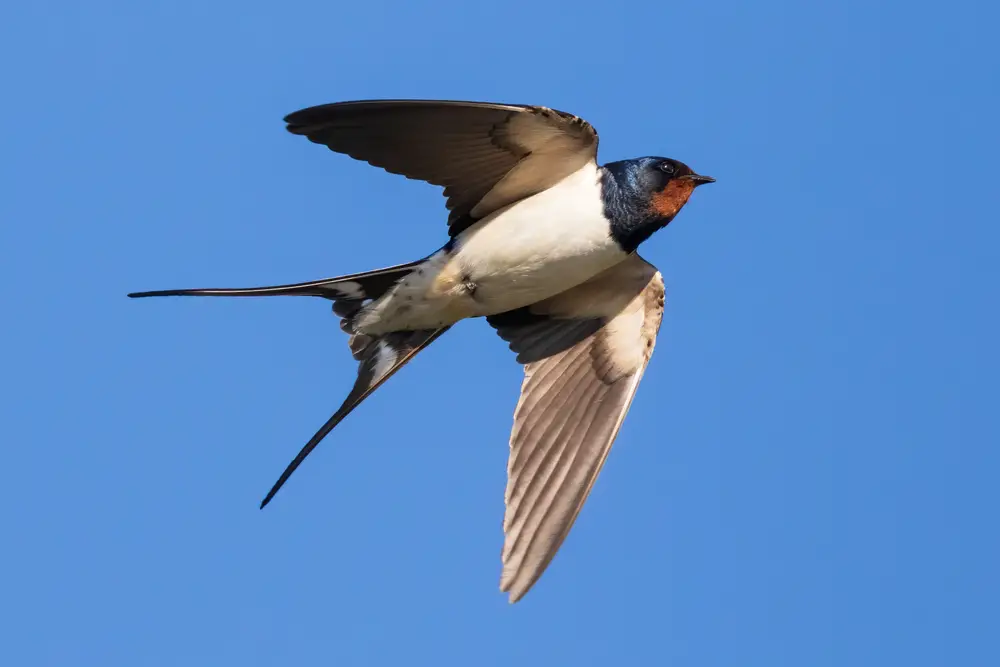This article aims to explore the distinctions between swifts and swallows, two bird species that are often confused due to their similar appearance and behavior. By examining their physical characteristics, flight patterns and behavior, nesting habits, diet, and feeding habits, as well as migration patterns, we can gain a comprehensive understanding of how these two species differ from one another.
In terms of physical attributes, both swifts and swallows possess streamlined bodies with pointed wings. However, further examination reveals variations in size and coloration between the two species.
Additionally, their flight patterns and behavior exhibit dissimilarities in terms of speed, agility, and hunting techniques.
Nesting habits also provide insight into the divergent preferences of swifts and swallows regarding nesting locations and materials used.
Furthermore, differences in diet composition highlight contrasting feeding strategies employed by these avian creatures.
Lastly, distinct migration patterns shed light on their respective seasonal movements across different regions.
Through this exploration of various aspects related to swifts and swallows, readers will acquire a clearer understanding of the disparities between these two bird species.
Physical Characteristics
The physical characteristics of a swift and a swallow differ significantly, eliciting awe and admiration in observers.
Plumage variations play a prominent role in distinguishing these two avian species. Swallows typically possess vibrant plumage with various shades of blue or red on their undersides, while swifts display more muted tones of brown or gray.
Additionally, the wing structure sets them apart. Swallows have longer wings that are well-suited for maneuverability and aerial acrobatics, allowing them to glide effortlessly through the air.
In contrast, swifts possess shorter wings with a more streamlined shape, enabling them to achieve remarkable speed during flight.
These distinct physical attributes contribute to the unique beauty and remarkable capabilities exhibited by both swifts and swallows in their natural habitats.
Flight Patterns and Behavior
In terms of flight patterns and behavior, one can observe notable distinctions between the swift and the swallow.
Courtship displays are an important aspect of bird behavior, and both species engage in elaborate rituals to attract mates. Swallows perform acrobatic flights, often flying together in large groups while displaying their vibrant plumage. They also engage in complex aerial chases, showcasing their agility and speed.
Swifts, on the other hand, perform impressive diving displays where they plummet towards the ground before pulling up at the last moment.
Additionally, vocalizations play a crucial role in communication for both species. Swallows use a variety of melodious calls during courtship and territorial disputes. In contrast, swifts produce high-pitched screams that are used as contact calls during flight or when defending their nests.
These distinct flight patterns and vocalizations contribute to the unique behaviors exhibited by swifts and swallows.

Nesting Habits
Courtship displays aside, the nesting habits of swifts and swallows also showcase interesting distinctions.
Swifts are known for their ability to cling onto vertical surfaces, such as walls or cliffs, using their strong feet and short, sturdy tails. They construct their nests in these locations using saliva as a binding agent for twigs and other materials.
Swallows, on the other hand, build cup-shaped nests made primarily of mud pellets mixed with grass and feathers. These nests are often attached to horizontal surfaces, such as beams or under eaves.
Additionally, swifts tend to nest in colonies, whereas swallows usually prefer solitary nesting sites.
Breeding habits differ as well; swifts typically breed once a year and produce a small clutch of eggs, while swallows may breed multiple times throughout the season and lay larger clutches of eggs.
Diet and Feeding Habits
Diet and feeding habits reveal interesting distinctions between swifts and swallows. Swifts are aerial foragers, relying on their exceptional flying abilities to catch insects while in flight. They have a wide variety of preferred food sources, including flies, beetles, ants, bees, wasps, and other small airborne arthropods. Swifts are known for their ability to consume large quantities of insects daily due to their high metabolic rate.
In contrast, swallows exhibit a different foraging technique known as hawking. They typically perch on wires or branches before launching themselves into the air to capture insects on the wing. Swallows primarily feed on small flying insects such as gnats, mosquitoes, moths, and flies. Unlike swifts, swallows do not consume as many insects per day but compensate by catching larger prey items.
Overall, these variations in foraging techniques and preferred food sources highlight distinct adaptations that enable swifts and swallows to thrive in different ecological niches.

Migration Patterns
Migration patterns exhibit fascinating distinctions between swifts and swallows, reflecting their unique adaptations to navigate long distances and exploit varied habitats.
Firstly, swifts are known for their remarkable aerial abilities, allowing them to stay airborne for extended periods without landing. This enables them to migrate long distances in search of abundant insect prey.
In contrast, swallows rely on frequent stops during migration to rest and refuel.
Secondly, the breeding grounds of swifts are typically found in temperate regions worldwide, while swallows breed across a broader range of habitats including temperate and tropical areas.
Lastly, when it comes to wintering locations, swifts tend to migrate to Africa or other warmer regions where insects are more readily available. Swallows have a wider range of wintering locations spanning from North America to South America and even parts of Africa.
These distinct migration patterns highlight the diverse strategies employed by swifts and swallows to ensure their survival throughout the year.


